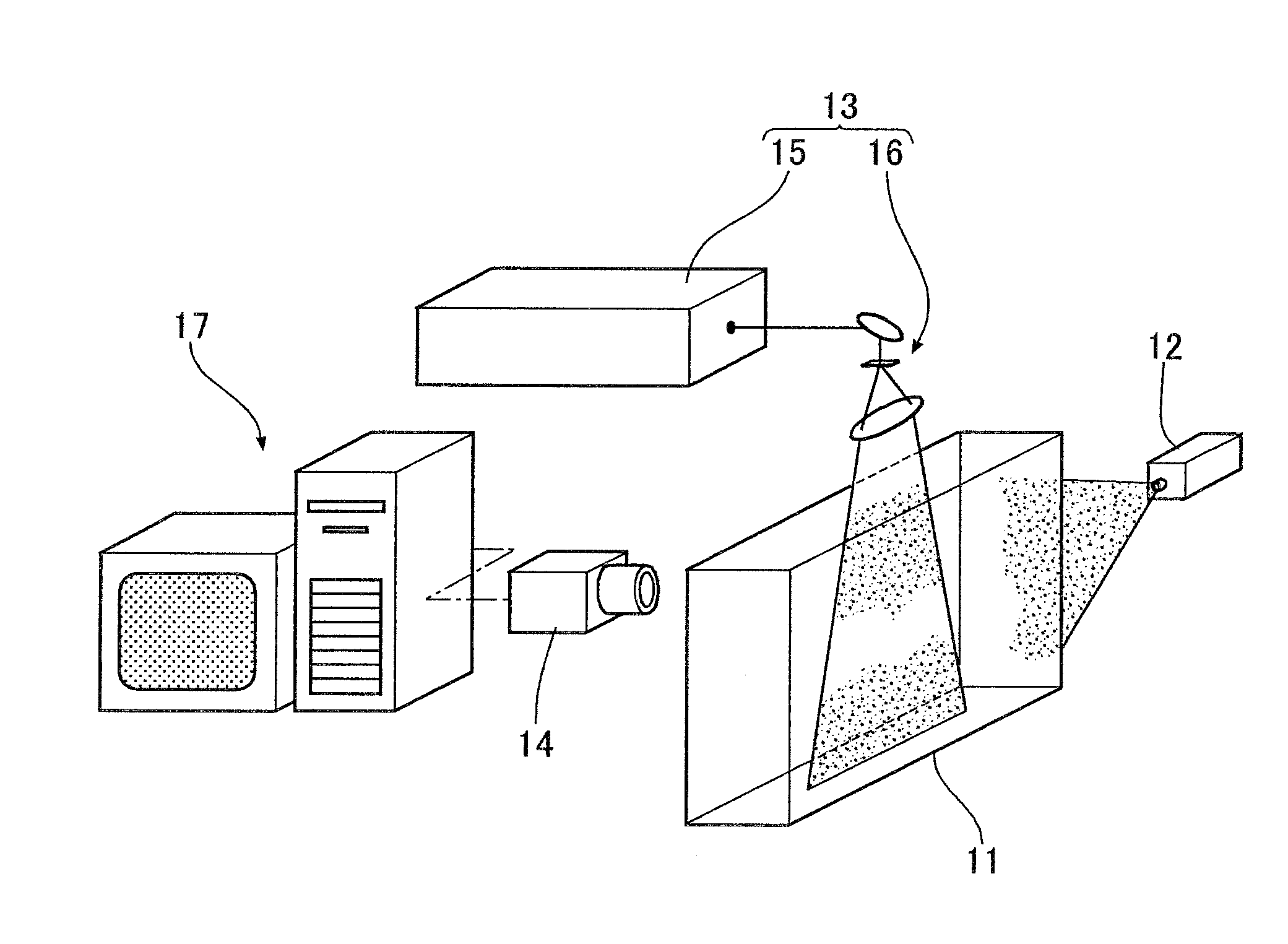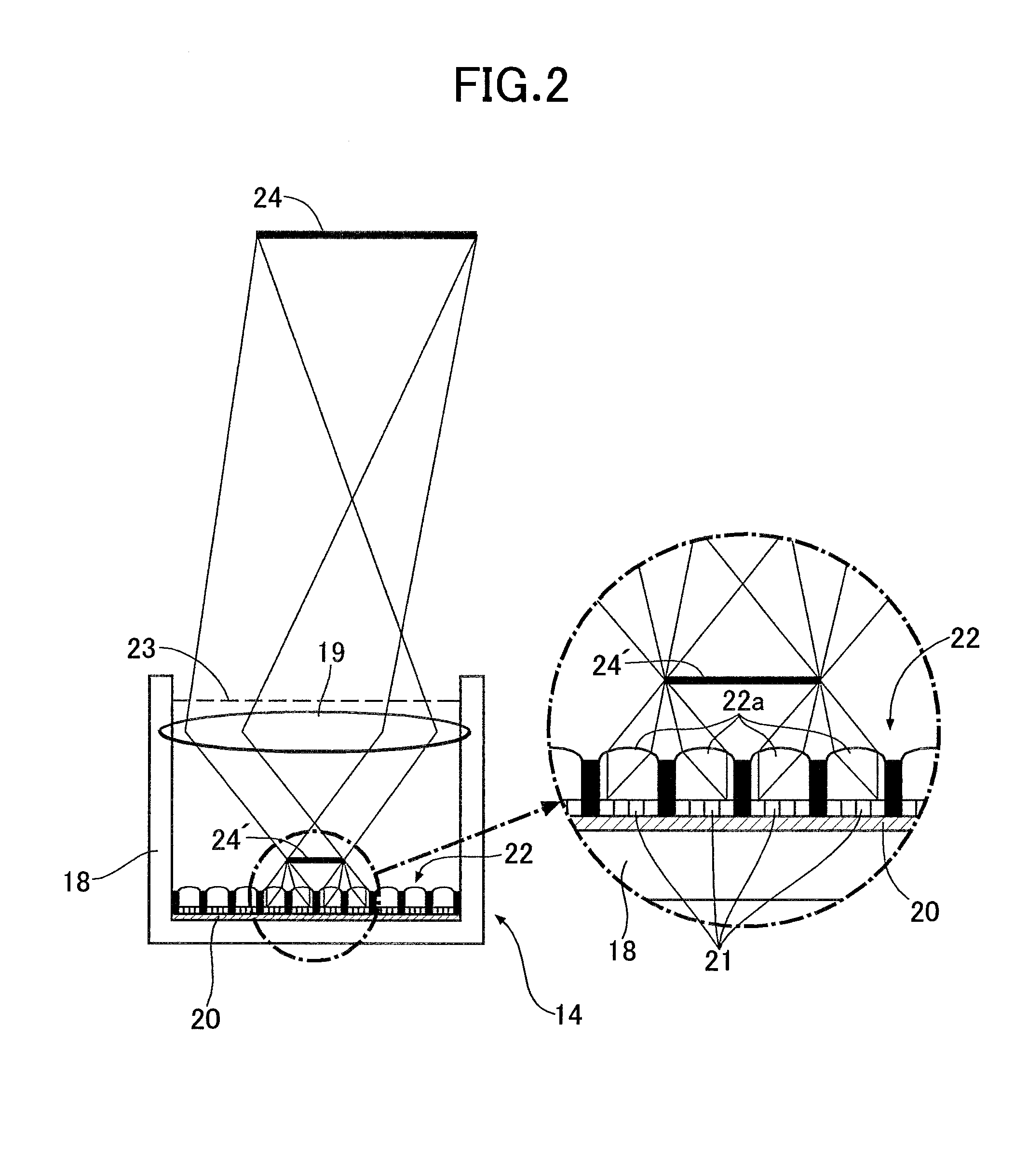Particle image velocimetry system for three-dimensional space
a technology of velocimetry system and particle image, which is applied in the direction of fluid speed measurement, instruments, devices using optical means, etc., can solve the problems of increasing equipment cost, difficult to ensure, and requiring a lot of time and manpower for setting up cameras, so as to improve measurement accuracy and reduce the number of cameras
- Summary
- Abstract
- Description
- Claims
- Application Information
AI Technical Summary
Benefits of technology
Problems solved by technology
Method used
Image
Examples
Embodiment Construction
[0025]An embodiment of the present invention is explained below by reference to FIG. 1 to FIG. 6.
[0026]As shown in FIG. 1, a particle image velocimetry system of the embodiment is used for measuring a three-dimensional velocity field around an object such as an automobile vehicle body. A tracer particle supply unit 12, disposed in an upstream part of a wind tunnel 11 to which a uniform flow of air at a predetermined flow velocity is supplied, supplies microscopic oil droplets (tracer particles) having a diameter of a few μm to the interior of the wind tunnel 11. The uniform flow changes its direction along the surface of the object, thus forming a three-dimensional velocity field. In the case of a closed type wind tunnel 11, at least one part of its wall face is provided with a transparent observation window, and a light source 13 and a CCD camera 14 are disposed at positions where they face the object with the observation window disposed therebetween.
[0027]The light source 13 is fo...
PUM
 Login to View More
Login to View More Abstract
Description
Claims
Application Information
 Login to View More
Login to View More - R&D
- Intellectual Property
- Life Sciences
- Materials
- Tech Scout
- Unparalleled Data Quality
- Higher Quality Content
- 60% Fewer Hallucinations
Browse by: Latest US Patents, China's latest patents, Technical Efficacy Thesaurus, Application Domain, Technology Topic, Popular Technical Reports.
© 2025 PatSnap. All rights reserved.Legal|Privacy policy|Modern Slavery Act Transparency Statement|Sitemap|About US| Contact US: help@patsnap.com



